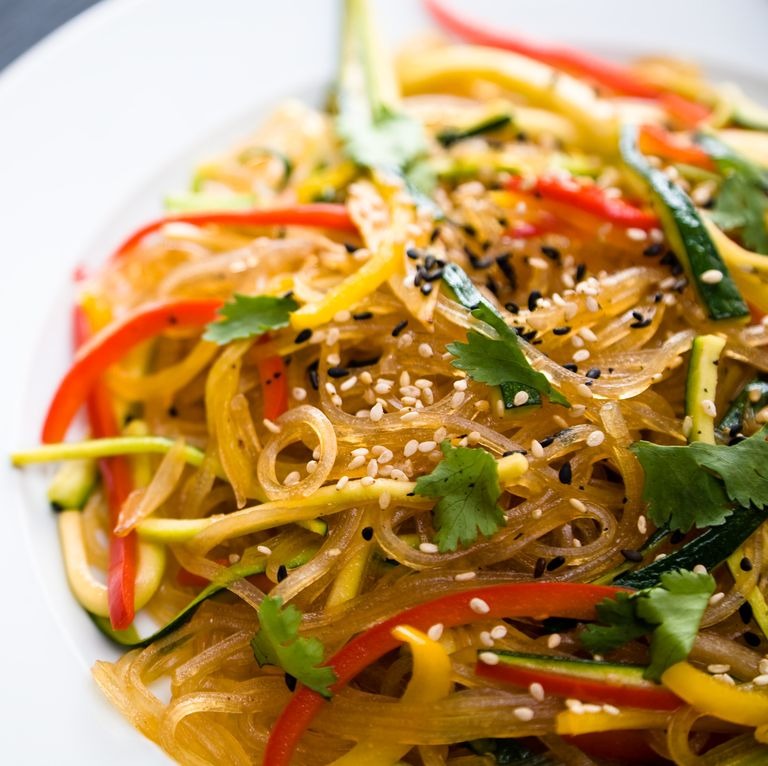
If you make a dish with glass noodles, you’ll see right away how they got their name: Glass noodles are clear like glass once they’re cooked. But what are glass noodles, exactly? Well, glass noodles, also called cellophane noodles or bean threads, are long, thin noodles commonly used in Chinese, Korean, Japanese, Thai, Filipino, and other East and Southeast Asian cuisines. They’re made from the starch of mung beans, potatoes, sweet potatoes, and/or tapioca and they look almost translucent when you cook them. Glass noodles taste similar to wheat pasta, but they’re slightly softer and heavier than, say, angel hair pasta, which is their closest Italian relative in shape and size. Because glass noodles don’t contain wheat flour, they’re usually gluten-free. (Always check ingredient labels to make sure that your glass noodles are produced in a gluten-free facility.) Keep scrolling to learn more about glass noodles and how to cook them.
Glass noodles are sold dried in packages, and you’ll usually find them among the shelves with other Asian noodles, like rice and soba noodles. (You can also easily find the noodles online.) Glass noodles are long and thin and white or tan in color—they won’t turn clear until they’re cooked. They’re great in stir-fries and salads—they soak up tons of flavor.
Are glass noodles healthy?
Despite not being made with flour, glass noodles are nutritionally similar to white flour–based pastas. (Each 1 cup serving of cooked glass noodles has 160 calories and 39 grams of carbohydrates, whereas the same amount of cooked spaghetti has 200 calories and only 24 grams of carbs.) Glass noodles are not a great source of fiber, protein, or vitamins, but they do offer a gluten-free alternative to flour-based pastas (again, be sure to check your package labels).
How do you cook glass noodles?
Glass noodles actually do not need to be cooked in boiling water. The easiest way to prepare them is to pour boiling water over them in a heatproof bowl and let them sit for 10 to 15 minutes until softened before draining. (Check the label for instructions.) If you do choose to boil them, they will only need a quick 3 to 5 minutes.
What dishes can I make with glass noodles?
Glass noodles are very popular in East and Southeast Asian cuisines and are often served in both hot and cold preparations such as soups, hot pots, stir-fries, spring rolls, and cold salads. If you can’t find them, you can usually use rice vermicelli (for chilled salads or spring rolls), soba noodles (for dishes like stir-fries) or angel hair pasta (for most soups) in their place. None of these substitutes will have the same translucent appearance, but they can be used in a pinch. Glass noodles are often served on the bottom of a dish with the sauce, vegetables and protein on top—and it’s not mixed together until the last minute. (Glass noodles soak up liquid easily!) Try them in Ree Drummond’s Veggie Stir Fry, Thanksgiving-inspired Leftover Turkey Spring Rolls, or these Shrimp Spring Roll Noodle Bowls!
